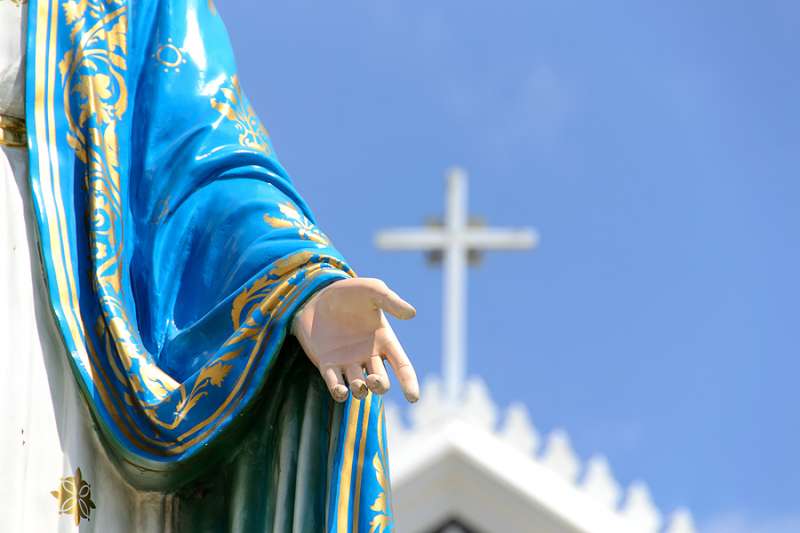A New Mexican diocese is investigating a statue of the Blessed Virgin Mary that some Catholics say has been “weeping” for more than a month.
Bishop Oscar Cant√∫ of the Diocese of Las Cruces gave a public update July 15 about the diocesan investigation into an allegedly “weeping” statue of the Virgin Mary. The cast bronze image of Our Lady of Guadalupe has been drawing crowds to the church named in her honor in Hobbs, N.M.
A statue of the Blessed Virgin Mary in Hobbs, N.M., appears to be weeping. Photo courtesy of the Diocese of Las Cruces.
Parishioners first reported seeing tears appearing to stream down the hollow statue in May.
Giving an update on the investigation launched that same month, Bishop Cant√∫ said on Sunday that some had also reported a pleasant smell around the statue.
“Some of the witnesses claimed it smelled of roses, so something similar to the oil I bless and consecrate each year that we use for baptism, for confirmations and for ordination of the priests.” So far, the investigation seems to support these reports. As part of the efforts to determine the origin and nature of the tears, samples were sent for chemical analysis. The results determined that the tears were made of a scented olive oil.
The statue itself is also being examined. "We examined the interior of the hollow statue," Cant√∫ told reporters. "There's nothing on the interior that's not supposed to be there, except for cobwebs. So we took pictures; we examined it."
It was thought by investigators that the tears might have been the result of residual wax from the casting process, but this appears to have been ruled out. Cant√∫ said that the manufacturers had assured them that the heat of the casting process made it impossible for there to be any moisture left in the statue. Addressing the possibility that the weeping statue could be an hoax, he noted that if it was he could not see how it was being accomplished.
On July 11, it was announced that Bishop Cant√∫ was being transferred to take up the post of bishop coadjutor in the diocese of San José, California. He is scheduled to take up that post at the end of September. Before he leaves, Cant√∫ said he intends to visit the Church of Our Lady of Guadalupe to see the statue for himself.
Before making any final decision on the miraculous nature of the weeping statue, the bishop said he would be seeking advice from a higher authority. “I'm checking best practices," he told reporters. "Certainly, I have a final say, but I would defer to the wisdom of Pope Francis."
In the meantime, the Hobbs church continues to see a steady stream of visitors. Even without formal recognition by church authorities, many are finding it a moving experience.
“I've read most of those written testimonies, and they are stories of tremendous faith, people who have been dealing with terrible suffering in their lives and have felt a tremendous spiritual consolation that Mary walks with us in our tears” Cant√∫ said.
He noted that for many Catholics in the border diocese of Las Cruces, the image of Our Lady crying with them was deeply powerful. “I can't help but think of my own shedding of tears for the poor people who come to our border, fleeing life-threatening situations. The tears of those children who are separated from their parents. There are many reasons we would shed tears, and God stands with us in those moments.”
The diocesan investigation continues.

